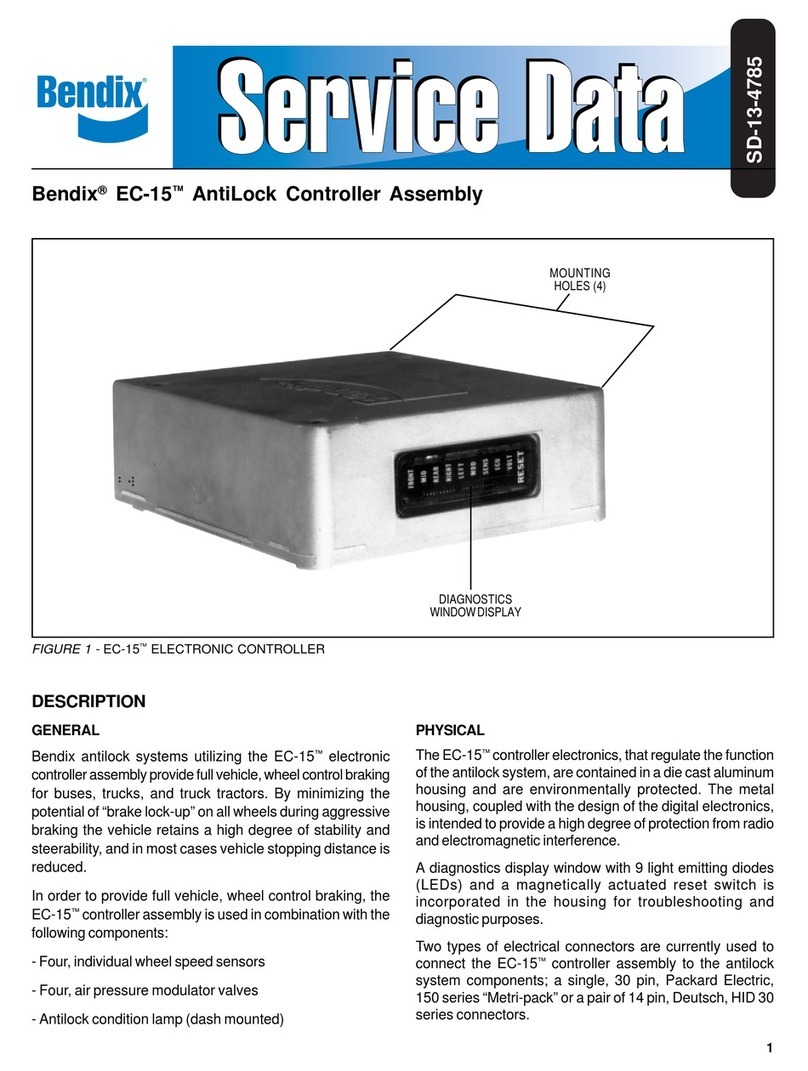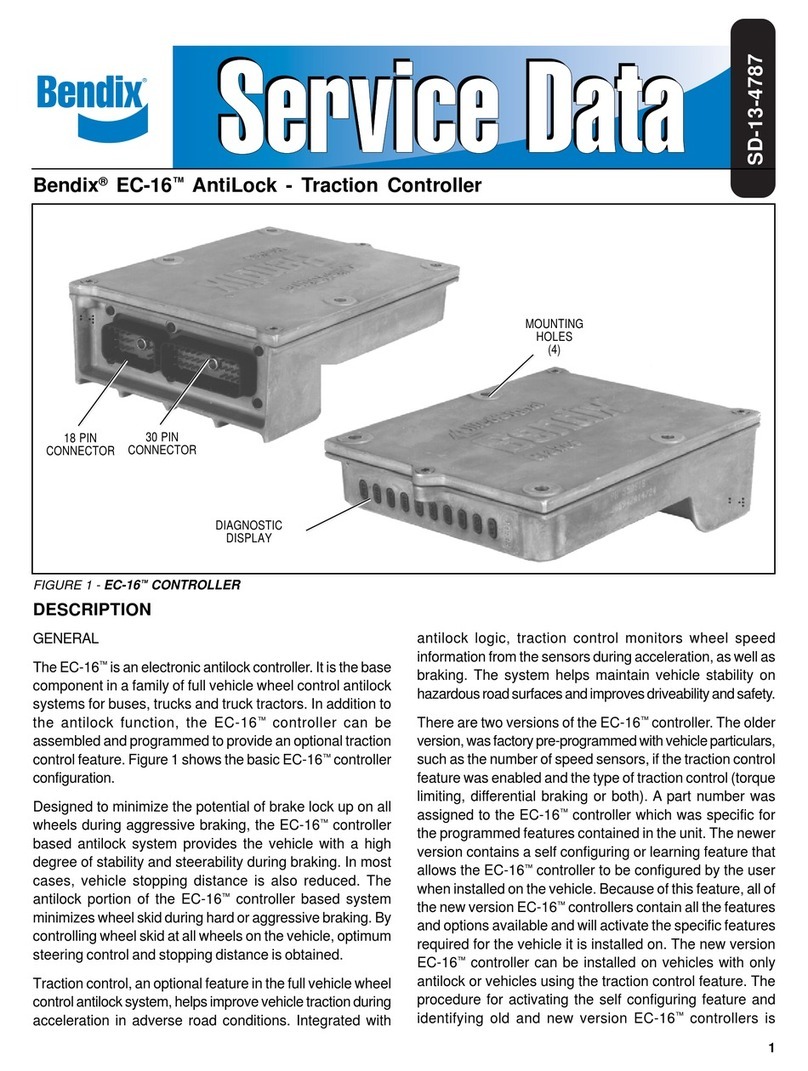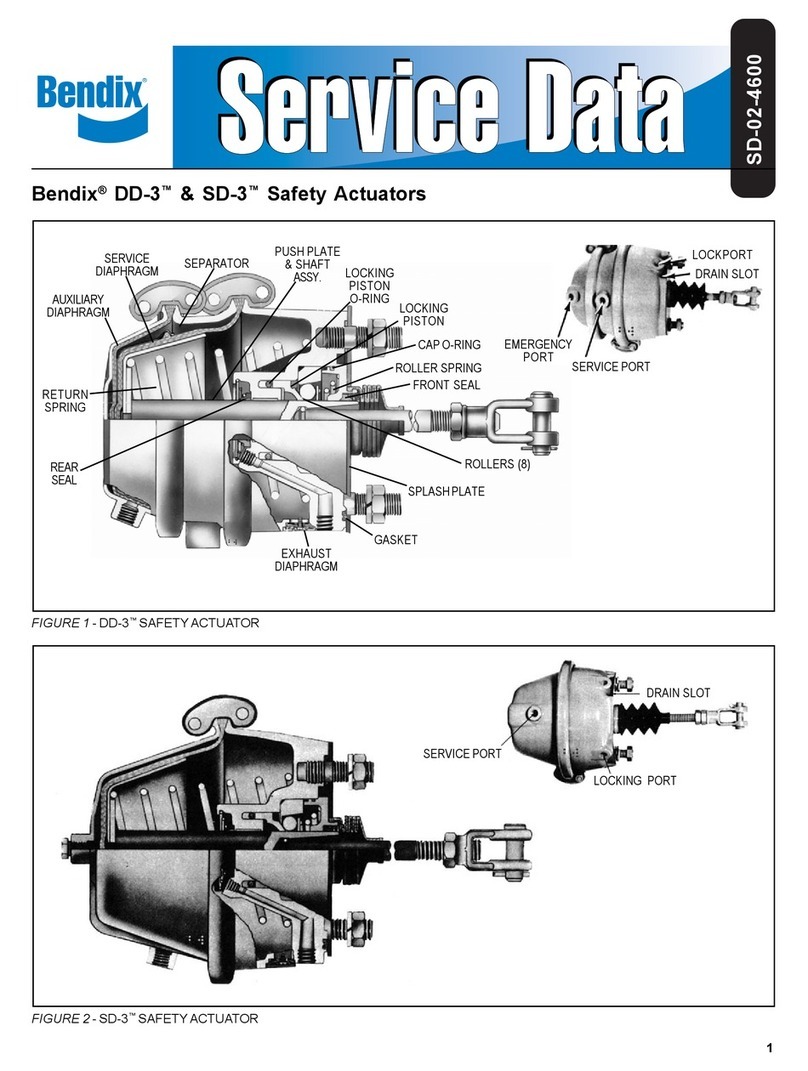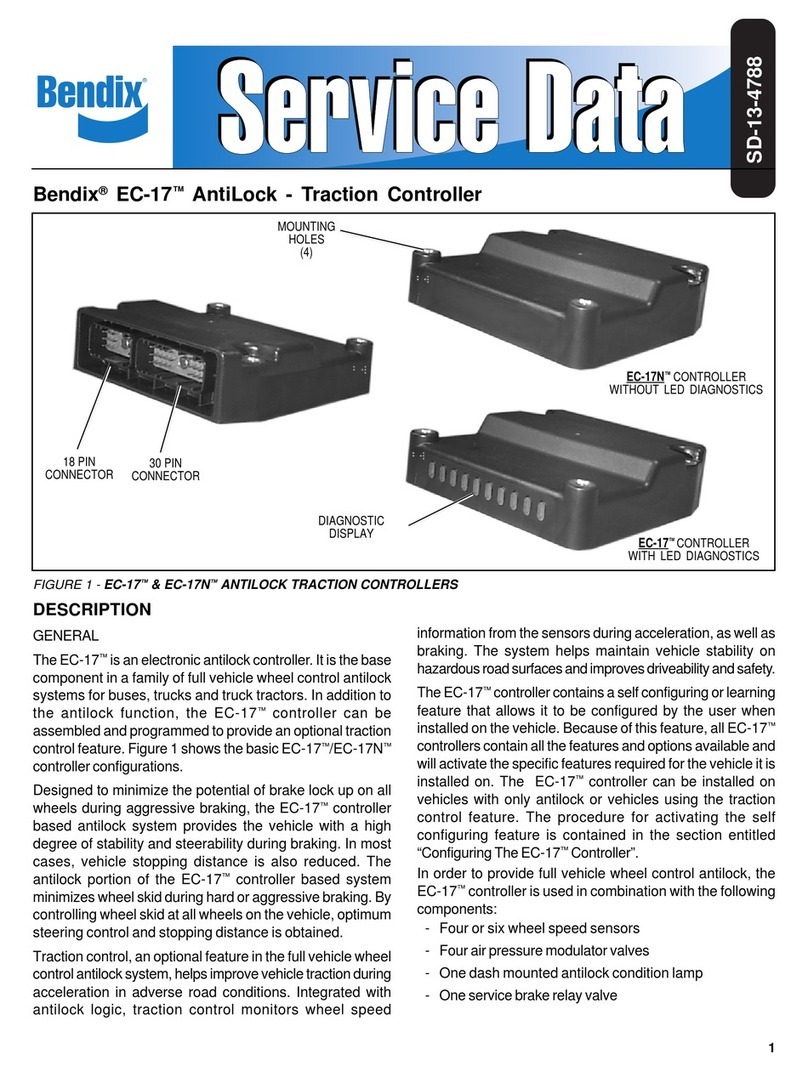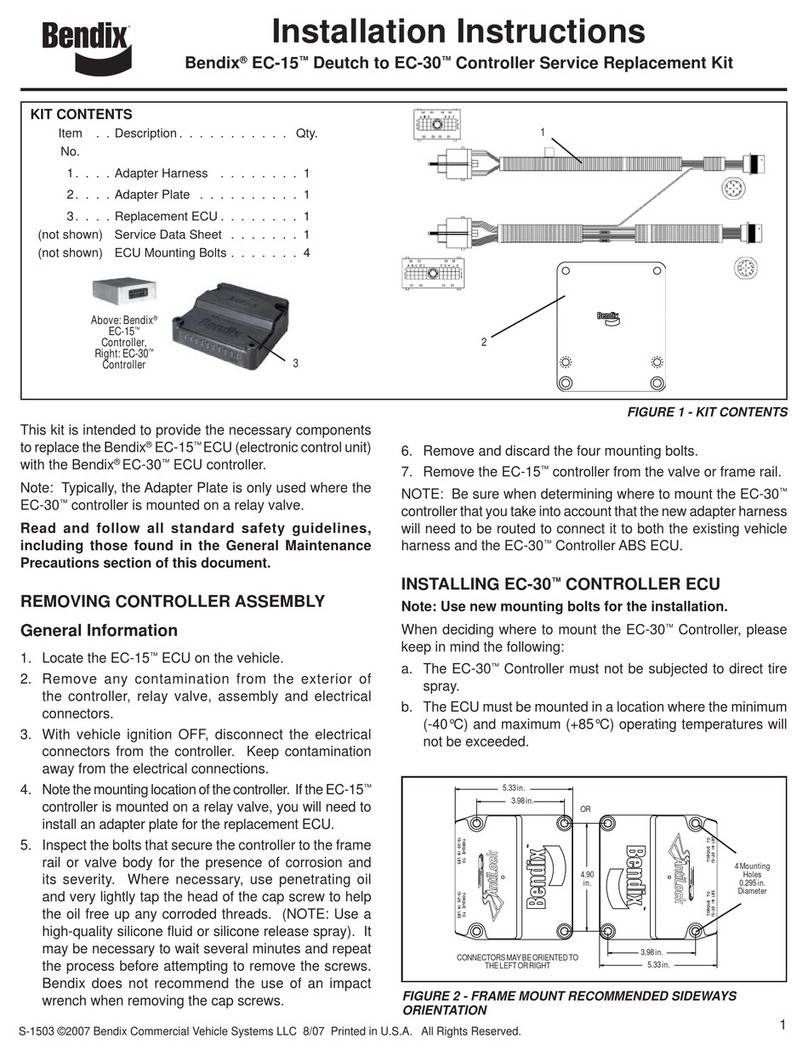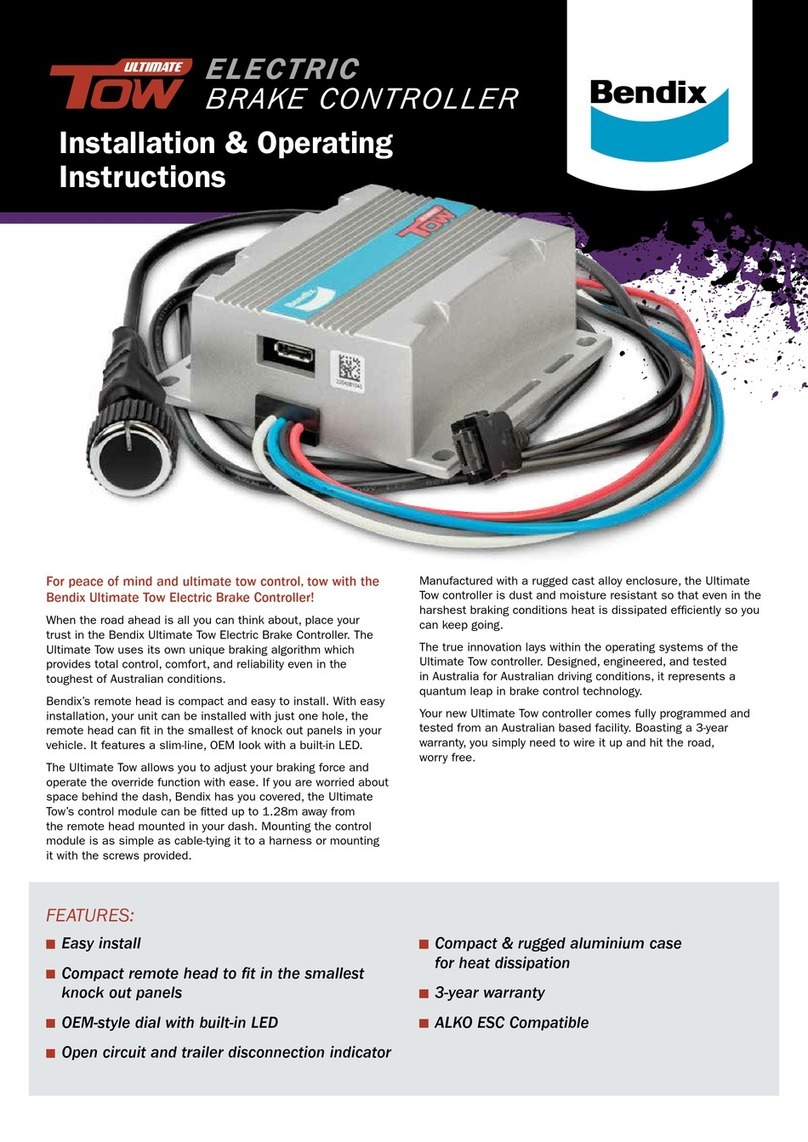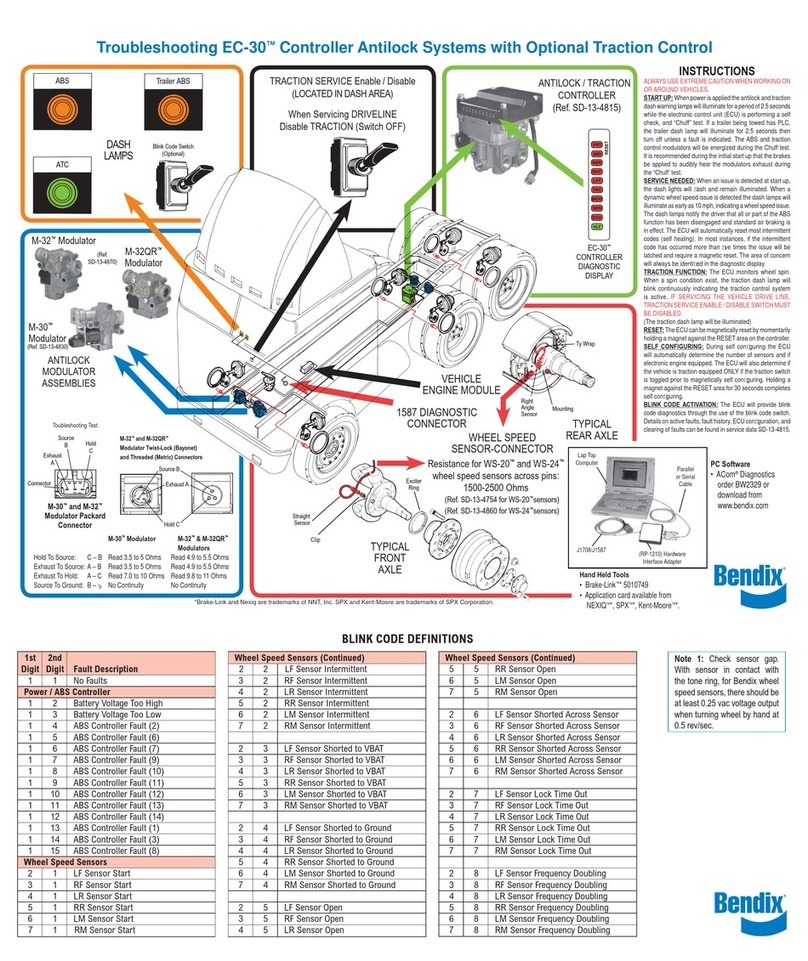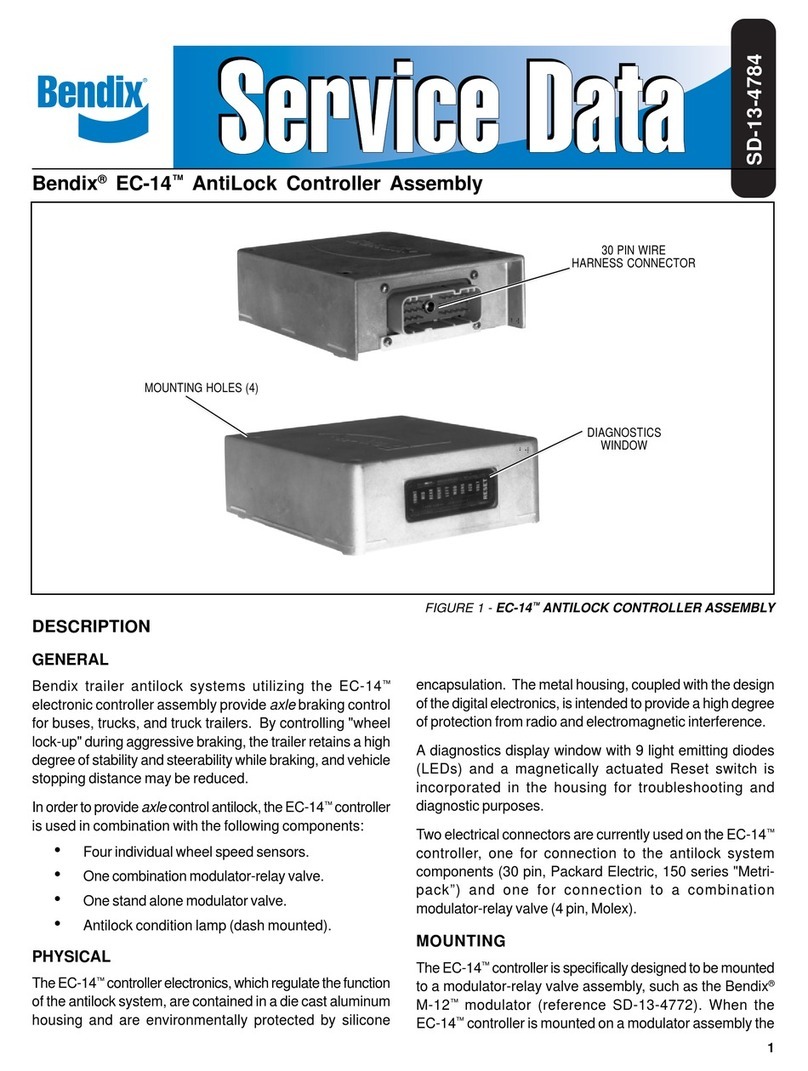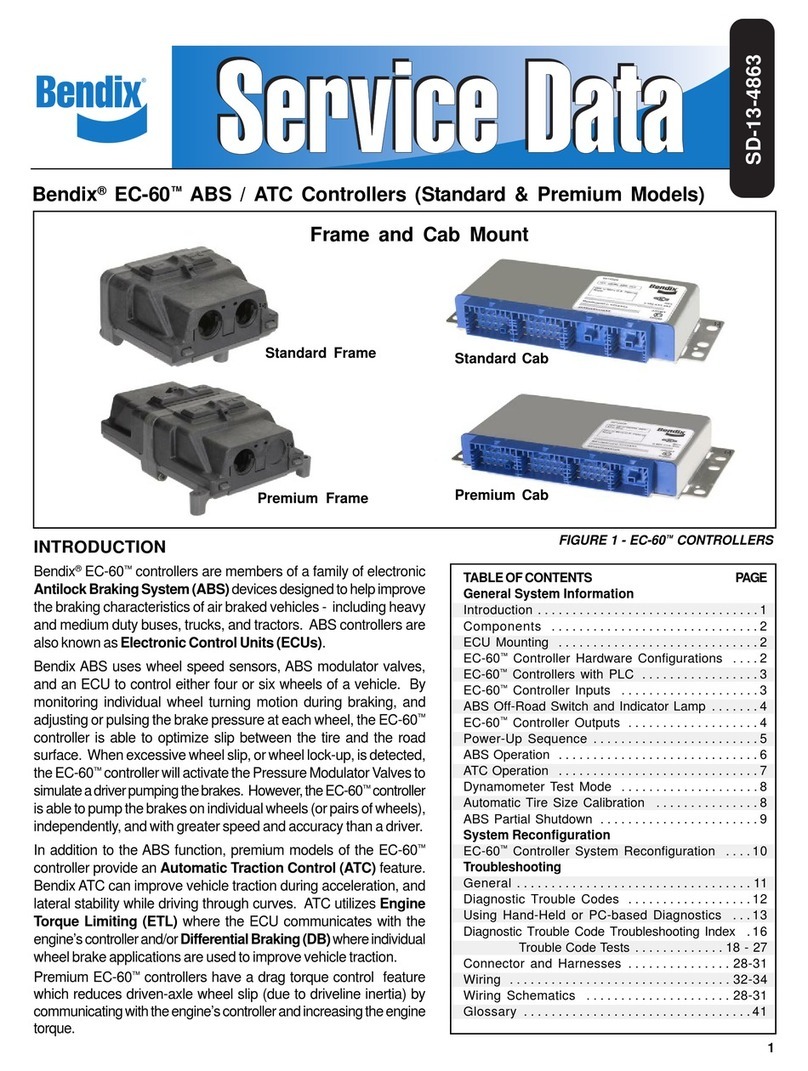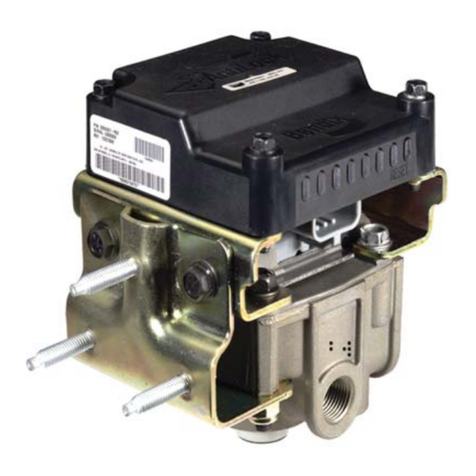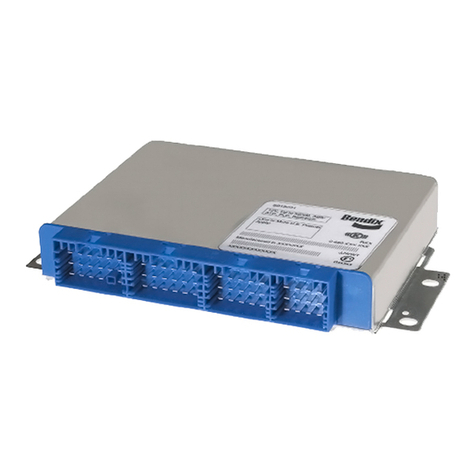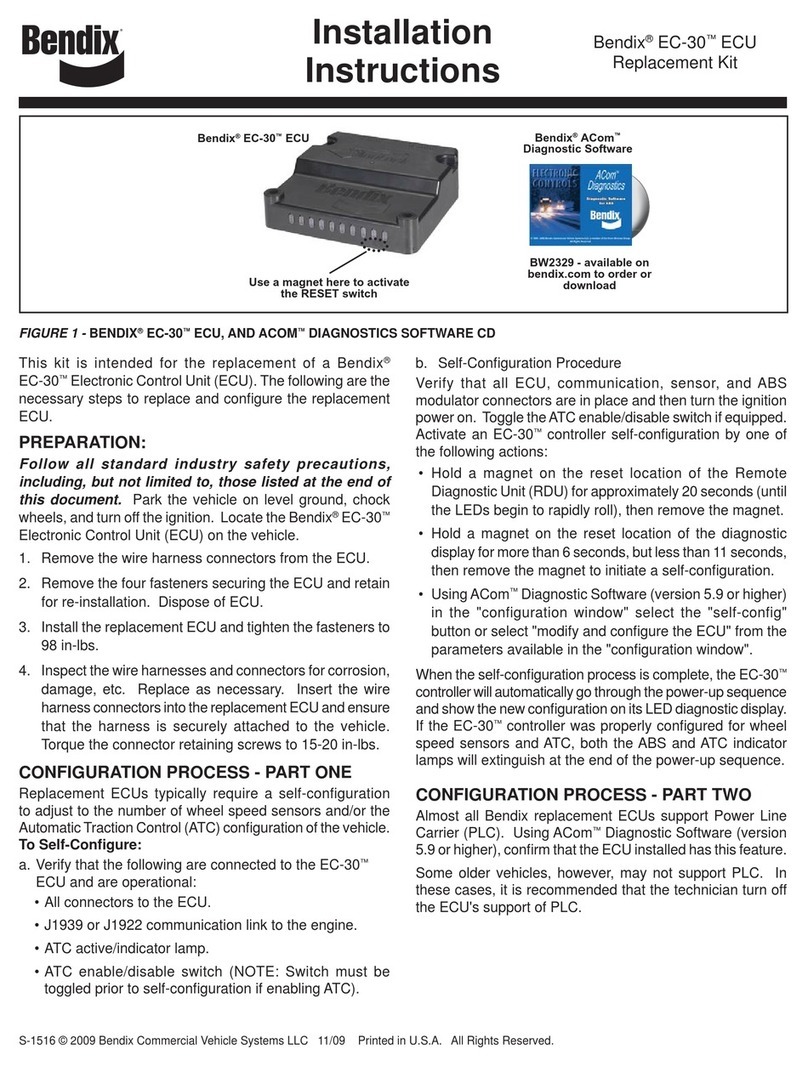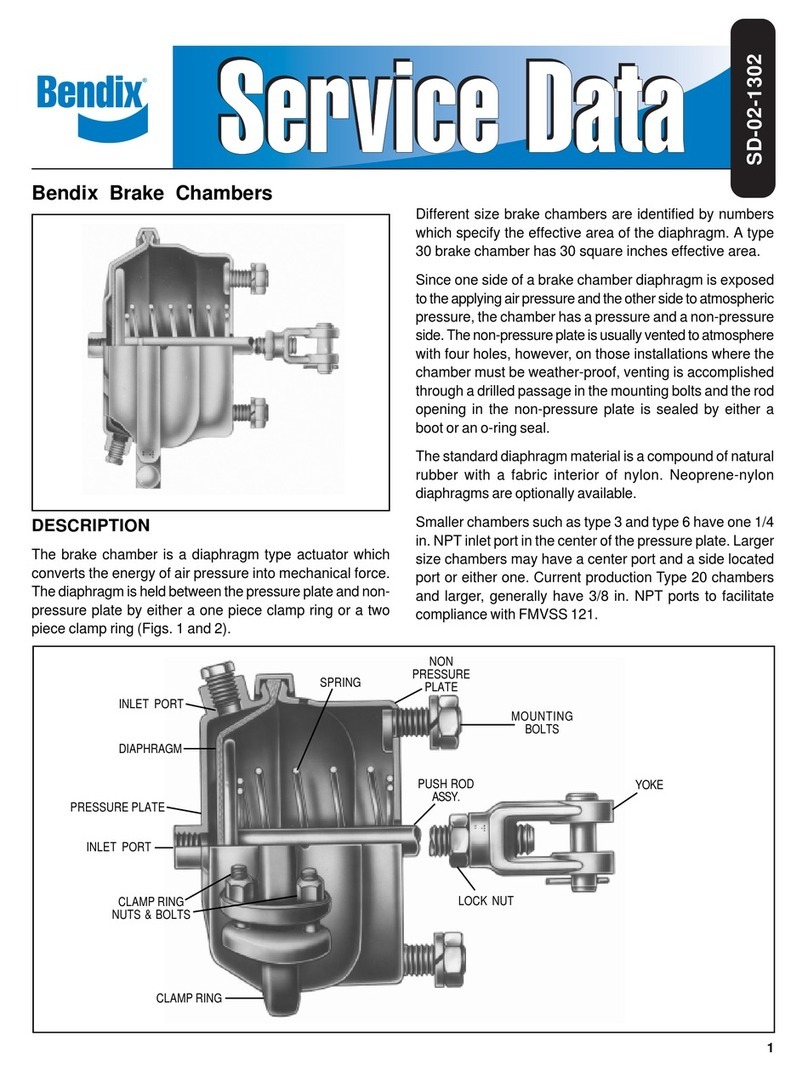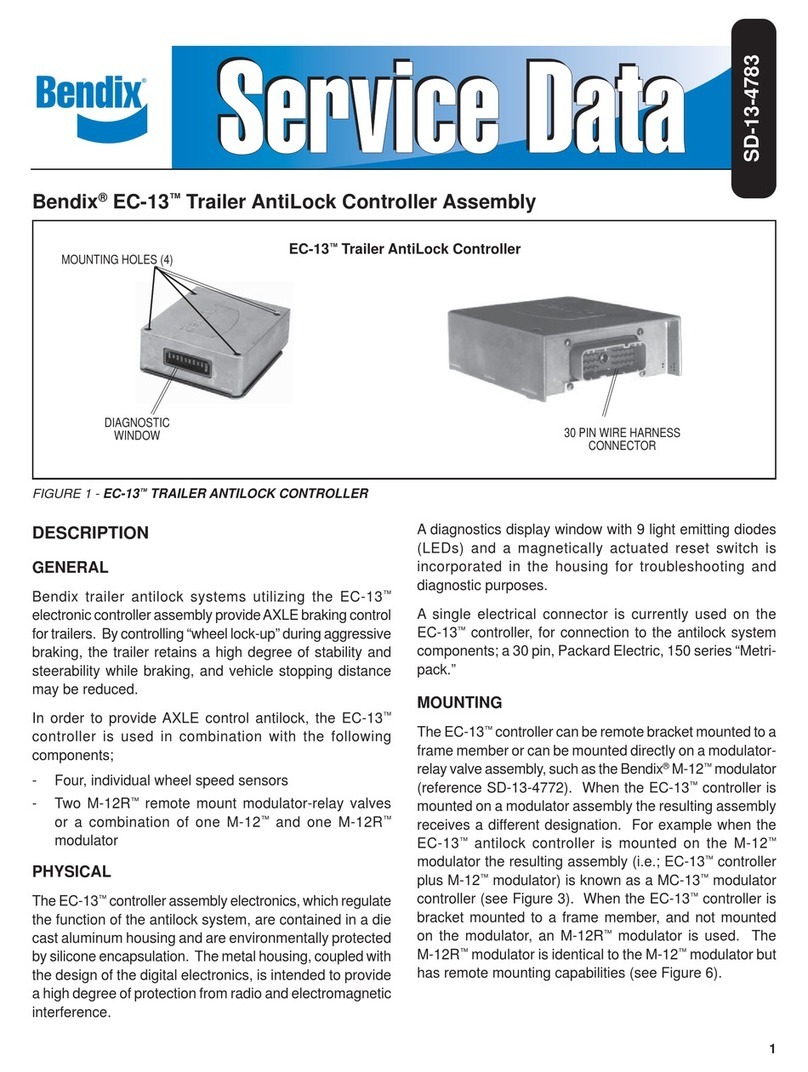
5
Trailer ABS Warning Lamp
EC-30™controller models with PLC can be configured to
controla trailerABSwarning lamp(located in thedash) that
indicates the status of the trailer ABS unit of one or more
trailers or dollies. The EC-30™controller directly controls
the trailer ABS warning lamp by providing a ground path
when the lamp is to be activated. Pin E2, of the 30-pin
connector, is the trailerABS warning lamp output.
J1939/J1587 Trailer ABS Warning Lamp
The EC-30™controller can be configured to broadcast the
trailer ABS status over the SAE J1939 or the SAE J1587
serialcommunicationslinks. Inthiscase, avehiclecontroller
will directly operate the trailer ABS warning lamp. When
configuredinthismanner,there isnowireinstalledinpinE2
of the 30-pin connector. In the event that communications
is lost between the EC-30™controller and the vehicle
controller, the dash controller will activate the trailer ABS
warninglamp.
J1708/J1587 Diagnostic Link (J1939)
The EC-30™controller provides a J1708/J1587 diagnostic
linkto communicatewith the vehicleand variousdiagnostic
tools. Diagnostics, system configuration, data uploading
anddownloadingandotherfunctionscanbeperformedusing
this link. The EC-30™controller is supported by tools such
asBendix®ABSDiagnosticSoftware,theBendix®DCIhand
held tool and the MPSI ProLink. The EC-30™controller
may also provide diagnostics using the SAE J1939 serial
communications link.
J1939/1922 Engine Torque Reduction - ATC
The EC-30™controllercanbe configured to reduce engine
torque over the SAE J1939 (J1922 for some service
replacement models) serial communications link. The
EC-30™controller will send a J1939 message to reduce
enginetorqueduringATCoperation.
ATC Active/Warning Lamp
PremiumEC-30™controller modelsconfigured forATCcan
controlanATC active/warninglamp toindicatethe statusof
theATCsystem. TheATCactive/warninglampflasheswhen
ATCisactiveand staysonif anATCsystem faultisdetected
orATC is disabled by theATC enable/disable switch. The
EC-30™controller directly controls theATC active/warning
lamp by providing a ground path when the lamp is to be
activated. PinC2,of the30-pinconnector,is theATCactive/
warninglamp output.
J1939ATCActive/Warning Lamp
PremiumEC-30™controller modelsconfigured forATCcan
be configured to broadcast the status of the ATC active/
warning lamp over the SAE J1939 serial communications
link. Inthis case a vehicledash controller directly operates
the ATC active/warning lamp. When configured in this
manner, there is no wire installed in pin C2 of the 30-pin
connector. In theevent thatJ1939 communicationsare lost
between the EC-30™controller and the vehicle dash
controller, the dash controller will activate the ATC active/
warninglamp.
ATC Modulator
PremiumEC-30™controllermodelsconfiguredfordifferential
braking ATC will activate the ATC modulator during ATC
situations. TheATC modulator is an electrically controlled
air valve integral to theATR valve. Pins D2 and D3, of the
18-pinconnector,control theATC modulator. Aconnection
to the ATC modulator is provided via a two-pin Deutsch
connectorfrom theATRvalve. See figure 2.
ABS Warning Lamp
The EC-30™controller controls an ABS warning lamp to
indicatetheABSunitstatus. TheEC-30™controllerprovides
aground signal to activate anABS warning lamp relay and
turn the ABS lamp off. The actual ABS warning lamp is
connected to the normally-closed contacts of the relay in
orderto illuminatein afail-safemanner duringanABS ECU
failure. PinE3, of the30-pinconnector,is theABS warning
lampoutput.
J1939ABS Warning Lamp
The EC-30™controller can be configured to broadcast the
ABSstatusovertheSAEJ1939serial communicationslink.
Avehicle dash controller directly controls theABS warning
lamp. When configured in this manner, there is no wire
installed in pin E3 of the 30-pin connector. If J1939
communicationsis lost between theEC-30™controllerand
the vehicle dash controller, the dash controller will activate
theABS warning lamp.
Retarder Disable Relay
The EC-30™controller controls an engine or transmission
retarderdisablerelay. Theretarderactivation wire isrouted
through the normally-closed contacts of the relay. The
EC-30™controller provides a ground path to activate the
relayandinterruptpowertotheretarderduringABSoperation.
This output may also connect directly to a transmission
ECU. PinK1,of the30-pinconnector,is theretarderdisable
relayoutput.
J1939/J1922 Retarder Disable
The EC-30™controller can be configured to interrupt the
engine or transmission retarder over the SAE J1939 serial
communicationslink. (J1922forsomeservice replacement
models). The retarder will be disabled duringABS via the
serial communications. When configured in this manner,
there is no wire installed in pin K1 of the 30-pin connector.
Use of the retarder disable function via the serial link may
beessentialtoABSperformanceandishighlyrecommended
forvehicles equippedwith a capableretarder.
J1939/J1922 Torque Converter Lock Disable
The EC-30™controller can be configured to interrupt the
automatictransmission torqueconverter lockfunction, over
theSAEJ1939serialcommunicationslink. (J1922for some
service replacement models). The converter lock will be
disabledduringABS viatheserial communications. Useof
thetorque converter lockdisable function maybeessential
toABSperformanceand ishighlyrecommendedforvehicles
equippedwith a capable transmission.

